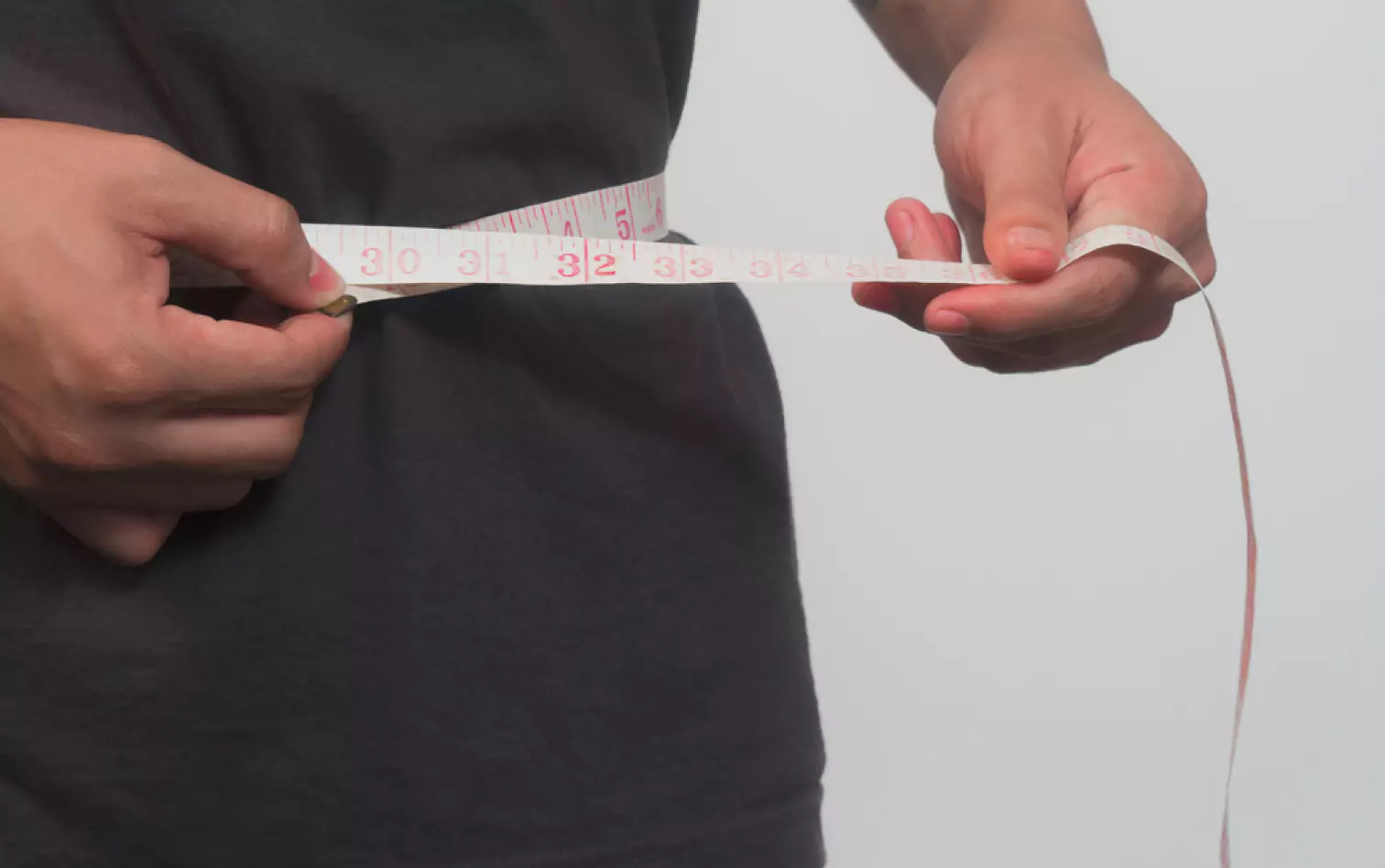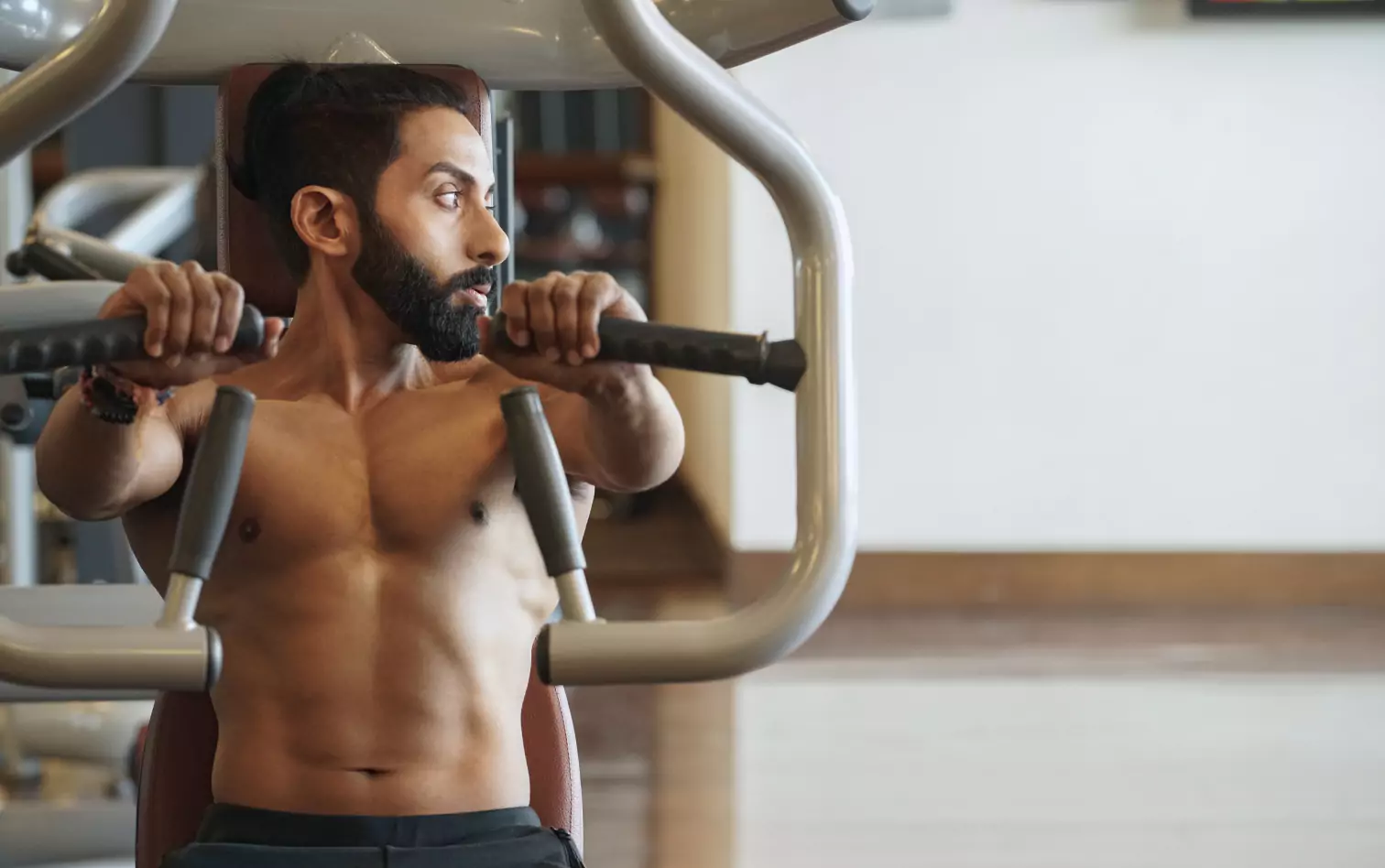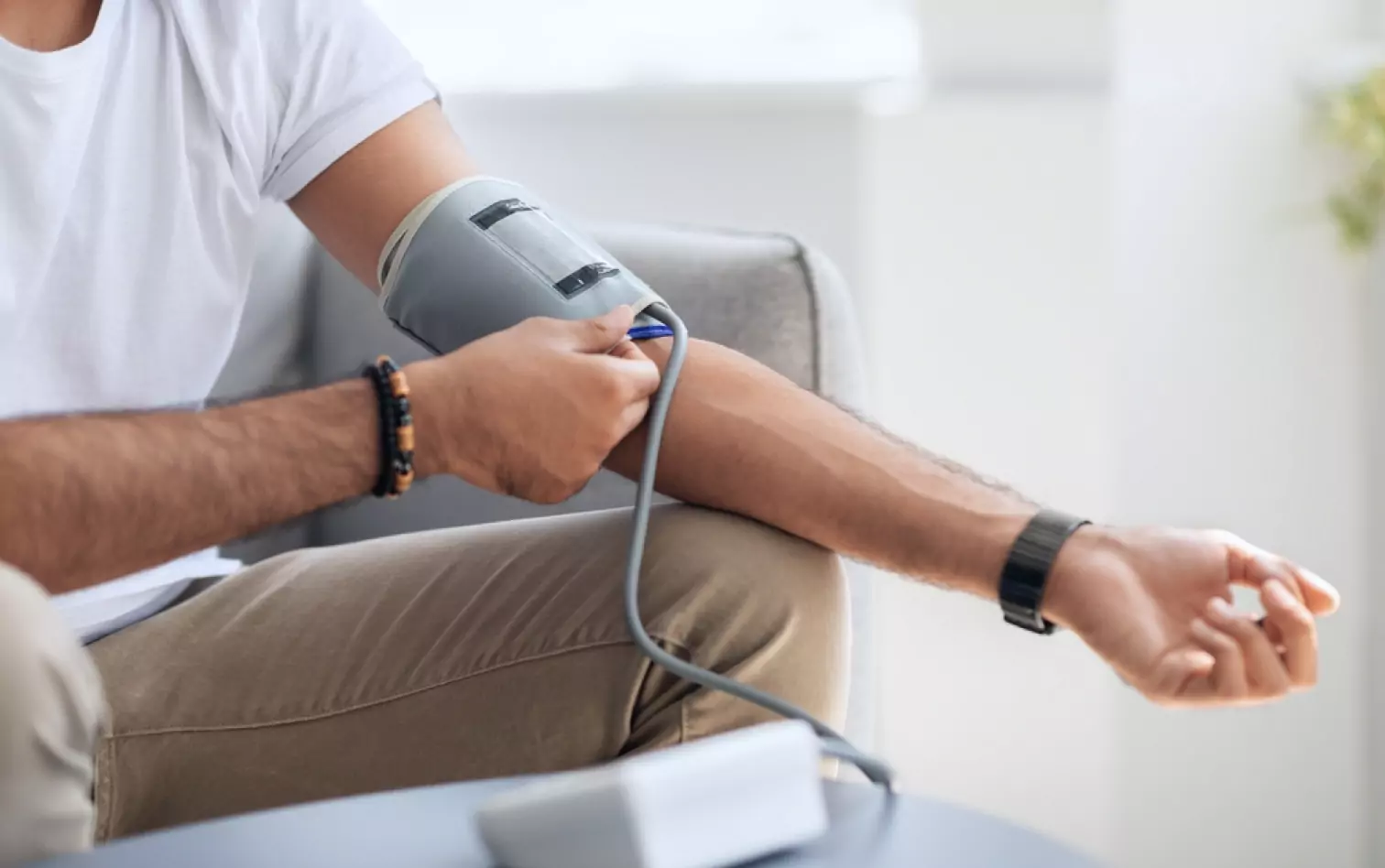9 Essential Ways to Track Your Fitness (That Don’t Involve a Scale)

Key Takeways
Is the number on your scale a good enough measure of your fitness levels? You may think of it as a definite marker of your fitness levels, but all it really measures is your body weight. So, while shedding (or gaining) pounds may mean you're on the right track, they’re not the only metric by which you should track fitness progress.
Staying fit is essential, and tracking your workout progress by the numbers on your scale can feel validating. But how do you know whether all the workout routines and fitness classes are helping you to optimize your health?
Even if you’re focusing on weight loss or muscle building specifically, you can look beyond the scale to see whether you’re losing or gaining the muscle mass you desire. There are countless ways to measure improved fitness, from wearable technology to smartphone activity trackers. There's something for everyone here.
Read on to find out about eight essential ways to stay on top of your game, whether you're focusing on weight loss, weight gain, or muscle-building goals.
1) Take Body Measurements

Body measurements can be a great way to track your progress. Tracking your body composition goals with basic measurements to see if you are decreasing or increasing inches in specific areas of the body may help you determine more about your fitness routine's efficacy.
Your weight can fluctuate throughout the day depending on factors other than exercise, including your hydration status, stress levels, and bowel movements. Using a tape measure can keep an eye on those fluctuations as well. Also, remember that muscle weighs more than fat'; and you may lose fat and gain muscle simultaneously. So if you’re working towards a fat loss goal, you may see the number go up on the scale, but may still be progressing towards your goal of decreasing fat mass.
Pro Tips
- To take accurate body measurements, use a flexible tape measure and make sure it’s held snugly against your skin.
- Numbers aren’t everything, so measuring muscle mass and inches lost using a physical measurement can help you stay more motivated as you progress.
- Measure yourself daily, in the morning, on an empty stomach. It will help you track your body composition progress minus any other factors, like bloating or water retention, that you may experience throughout your day.
2) Take Progress Photos

Getting to your ideal body weight is challenging regardless of your current fitness levels and body composition. So, you should be proud of yourself for setting fitness goals to begin with. Taking progress photos can help keep you motivated during a weight loss or muscle-building journey. You can keep these photos for yourself or share them on a new social media page to help inspire others (and keep yourself inspired along the way).
Research has shown that sharing your fitness progress on social media may help people stay motivated to reach their goals. Whether you're a beginner or you've been at it for a while, taking photos can be a great way to track your progress and stay motivated.
Pro Tips
- Take weekly or monthly progress photos in the same location to track progress over time.
- Wear the same (or similar) clothes in all of your progress photos to track how your body composition changes.
- Try to make sure that you hold your body the same way and have the same lighting in each picture. These are supposed to be a stark, unfiltered vision of your progress.
3) Test out Your RM (rep-max)

Have you ever wondered what RM (rep-max) weight loss (or gain) method is best for you? RM measures the number of reps that you can “comfortably” complete in a specific lifting exercise.
It's essential to know your RM (rep-max) for each weightlifting exercise when you begin your fitness journey and set goals, especially if you’re focusing on strength training. It will help you create the best workout routine possible to achieve your goals without delay.
Pro Tips
- Choose a list of workouts to measure your progress. It will be important because different lifting exercises target different muscle groups. Stick to the specific exercises you pick to mark your progress over the following weeks/months.
- Keep a daily or weekly journal of your progress over time.
- Make sure to rest in between lifting exercises and take days off to work on other muscle groups. You must allow your muscles to have the proper recovery time to prevent injury.
4) Create a Workout Journal

If you're trying to squeeze in a workout somewhere in between a hectic schedule, it can be challenging, if not impossible, to track your progress. That's where a workout journal can come in handy.
Workout journals are an excellent way to track all your fitness goals, from weight loss and muscle gain to endurance levels and overall fitness. By tracking all your physical activity, you'll see how far you've come and how much farther you may have left to go.
Pro Tips
- Choose the right format for your lifestyle. Some people prefer traditional paper and pen, while others use workout apps—there are many ways to keep a workout journal, so pick whatever works best for your specific needs.
- Use your journal to record how much water you’re drinking every day and what foods your body responds best to as you track fitness progress. You can also use a continuous glucose monitor for insights into this.
- Use your journal to begin your day with a healthy dose of motivation. Write down something you’re proud of achieving and two to three fitness goals you want to accomplish that day.
- You could even use social media to create a workout “journal” for yourself. Post your progress to create accountability for yourself.
5) Consider Your Waist-to-Hip-Ratio

You may be surprised to learn that the waist-to-hip ratio (WHR) is a good indicator of overall health and fitness. This ratio can help you determine if you have too much fat around your middle. In fact, studies have shown that people with a WHR of 0.8 or below have a lower risk of chronic diseases such as heart disease and diabetes.
So how do you determine your WHR? It's simple—measure the circumference of your waist and hips, then divide the waist measurement by the hip measurement.
Pro Tips
- A healthy WHR should be no more than 0.8 for women and 0.9 for men.
- Use a soft measuring tape for this one, like the kind you use to measure your body to track progress in our first point.
6) Get a Physical From Your Doctor

While there are many different ways to track your fitness progress and set healthy lifestyle goals for yourself, who better to measure your fitness levels than a professional? A personal trainer can help you get on the right track when it comes to your workouts, but if you want to make sure you’re fit and healthy overall, it’s best to visit a doctor.
Don’t miss your annual checkup! Get a physical regularly to ensure that you’re on track with your fitness goals, check overall health and wellness, and identify areas that may need improvement.
Pro Tips
- Your doctor will be able to help you set realistic health goals based on your medical history.
- You will have to help troubleshoot any challenges you have along the way, especially if you have any preexisting health conditions.
- Review your diet and lifestyle factors and any other information to help your doctor understand any challenges you may have with your physical or mental health. It will help you to structure your fitness goals accordingly.
7) Check Your Blood Pressure

Keeping track of your blood pressure is an important aspect of staying healthy, especially if you're trying to get fit. High blood pressure can be a serious health problem, but it's often easy to treat if you catch it early.
Fitness can often help you lower your blood pressure. Fitness professionals recommend checking your blood pressure at least once a month and more often if you have any other health conditions like diabetes, kidney, or heart disease. Incorporating it into your routine will help you ensure you don’t forget—there’s no harm doing it more often!
Pro Tips
- If you find that your blood pressure is high, talk to your doctor about how you can lower it.
- You can check your blood pressure at home and in most pharmacies, but make sure that you discuss your ideal range with your doctor first, so you know what to be on the lookout for.
8) Consider Using a Fitness Tracker or Smartwatch

Almost everyone has a Fitbit or an Apple watch or some health tech strapped to their wrist, so this one isn’t a surprise. As technology advances, gadgets like smartwatches and fitness trackers become more popular and sophisticated.
While some people may view these devices as unnecessary gadgets, there are many valuable benefits to using them for fitness. Fitness trackers and smartwatches can help you monitor your activity levels, heart rate, calorie burn, and more. They can help you stay on track with your fitness goals and get the most out of your workouts.
Pro Tips
- Do your research before buying technology that you intend to wear every day. Make sure that it aligns with your lifestyle and your specific fitness needs.
- Check the battery life expectancy of your new device before purchase.
- Check the compatibility of your new device with any fitness apps that you are already comfortable using.
9) Use a Continuous Glucose Monitor

You probably know that maintaining a healthy blood sugar level is vital for overall health and wellness, but did you know that it's also crucial for weight loss? A continuous glucose monitor (CGM), a device that measures blood sugar levels continuously, can help you figure out how.
CGMs provide real-time information on blood sugar levels, which can help you adjust your diet and exercise routine for better overall health and improved fitness outcomes.
Pro Tips
- CGMs are water-resistant but not waterproof. So while you can wear them through sweat, rain, and a shower, avoid swimming deeper than three feet with them on or immersing them in water for over 30 minutes.
- Avoid snagging your CGM sensor on equipment or clothing, as that can dislodge the filament and loosen the sensor.
- Don’t wear your CGM through full-body scans or X-ray machines. Ask for alternative screening methods when you're traveling through airports. Don’t worry; TSA agents and most other security agents are familiar with this protocol.
Find the right Nutrisense programto turn insight into progress.
Go Beyond Glucose Data with Nutrisense
Your glucose can significantly impact how your body feels and functions. That’s why stable levels are an important factor in supporting overall wellbeing. But viewing glucose isn't enough. Nutrisense, you’ll be able to learn how to use your body's data to make informed lifestyle choices that support healthy living.
One-to-one coaching
Sign up to access insurance-covered video calls to work with a glucose expert: a personal registered dietitian or certified nutritionist who will help tailor your lifestyle and diet to your goals.
Monitor and measure what matters
With the Nutrisense CGM Program, you can monitor your glucose with health tech like glucose biosensors and continuous glucose monitor (CGM)s, and analyze the trends over time with the Nutrisense App. This will help you make the most informed choices about the foods you consume and their impact on your health.
Find your best fit
Ready to take the first step? Start with our quiz to find the right Nutrisense program to help you take control.

Natalie received her degree in Dietetics from Mansfield University and a Master’s in Clinical Nutrition from the University at Buffalo. Her career has included nutrition education and program development in her local community, adjunct faculty at several collegiate institutions, and clinical nutrition in both inpatient and outpatient settings.




